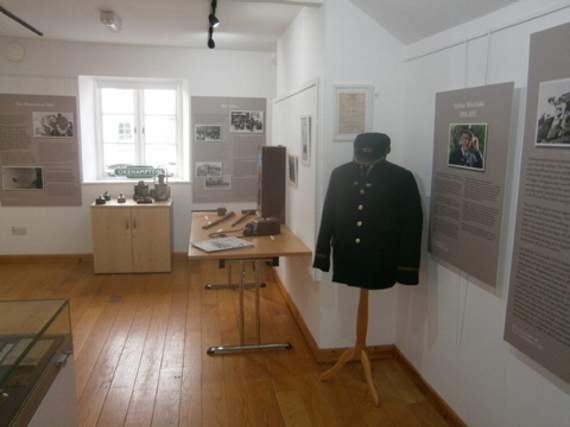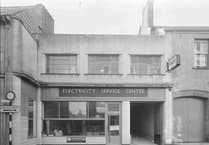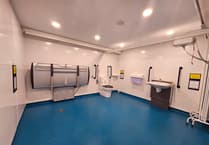THE Museum of Dartmoor Life has laid on a fascinating exhibition to commemorate the 150th anniversary of the arrival of the first trains in Okehampton in 1871 – while the town is preparing for the resumption of a regular train service to Exeter next month after a gap of 50 years.
The exhibition was launched at the start of the month during a special commemorative weekend with events including a tea party in the Charter Hall which people were invited to attend in Victorian dress, a re-enactment of the proclamation ceremony with silver band playing outside the town hall, and a children’s paintings competition – with the entries being displayed in shop and estate agents’ windows around the town.
As the exhibition, entitled ‘When the Train Came to Town’, shows, the tea party part of the commemorations was copying what happened in Fore Street on August 29, 1871 – the day when long tables were set up in the roadway to mark the first London & South Western Railway steam engine and four-wheel carriages arriving at the town’s station after a number of years when services from Exeter terminated four miles away at ‘Okehampton Road’ station near Sampford Courtenay and people had to complete their journey to Okehampton itself by horsedrawn road coach.
In fact people couldn’t ride on the first trains as the Board of Trade inspector hadn’t yet been to pass the extension as safe to ride on, so the travelling public had to wait until October 3, 1871 for the actual opening of the station. But, as the exhibition shows, once that happened there was a complete revolution to the way of life for people in this remote Devon town, with the railway creating new employment opportunities and enabling town and country folk to travel more widely at less cost. A few years later, with extensions of the line to Plymouth, and via long branches to Padstow and Bude, Okehampton became an important station on a wider network.
The exhibition explains the many roles of staff operating the railway and tells the story of how operation of the network of LSWR and later Southern Railway lines across northern Devon and Cornwall evolved over the years, such as the introduction of the Atlantic Coast Express right through from London Waterloo in 1926.
Also explained is how the military camps on the moorland above Okehampton arose as a direct consequence of the railway, and how at one time in the 1960s you could drive your car onto a ‘motorail train’ in the sidings at Okehampton that would beat the summer traffic jams by transporting your vehicle all the way to another terminal in South London at Surbiton. However, despite initiatives like this the age of the more widely available motor car, and of Dr Beeching, heralded a decline in the railways, with lines west of Okehampton closing during the 1960s and then the final British Rail regular timetable train to Exeter departing, with the town mayor and crowds in attendance, in 1972.
However, that is not the end of the story, as freight trains carrying good quality ballast from Meldon Quarry ensured the rails remained in place. Another part of exhibition tells of how various people and organisations in the town helped to save and restore Okehampton station and, with the help of Devon County Council, operated the summer Sundays only Dartmoor Rover passenger trains, a popular station cafe and also the Dartmoor Railway heritage trains.
Turning the wheel full circle, the exhibition concludes by explaining what is being done by Network Rail, with Government support, to bring the Okehampton line back into the national network, with a two-hourly daily service to Exeter due to begin on November 20.
When the Train Came to Town exhibition runs during the rest of this month and through November during usual opening hours at the Museum of Dartmoor Life in West Street, Okehampton.




